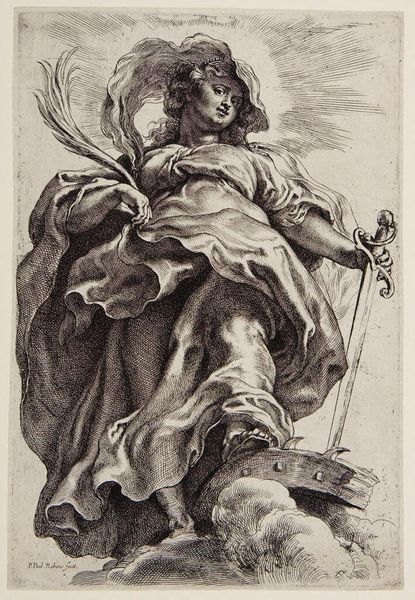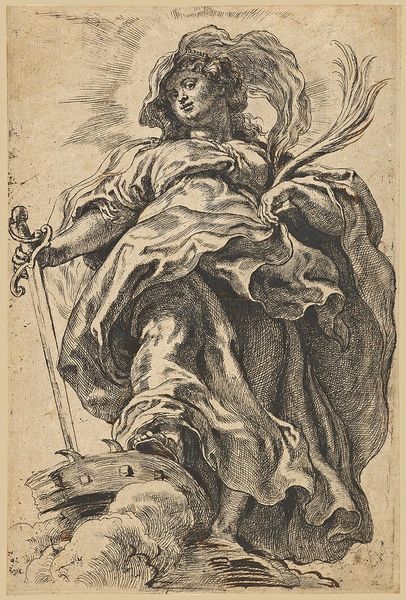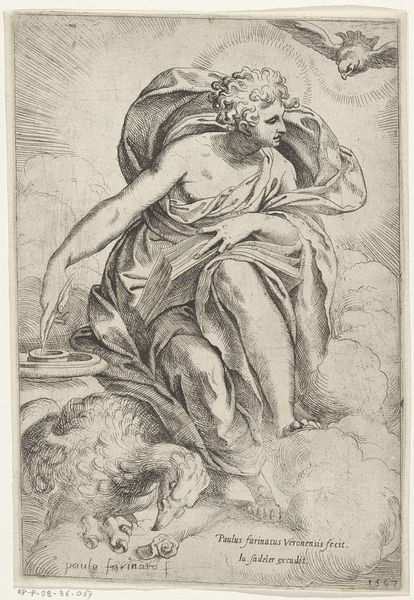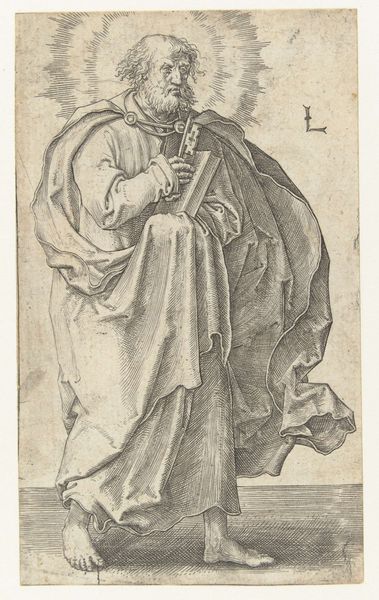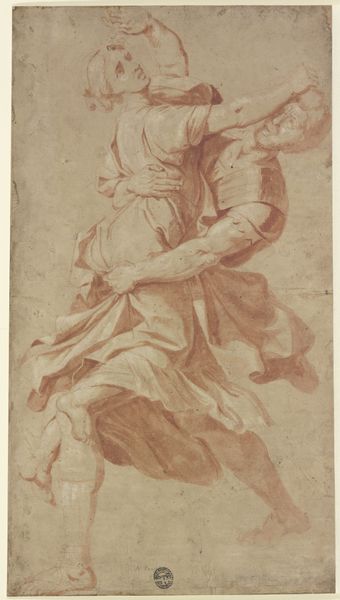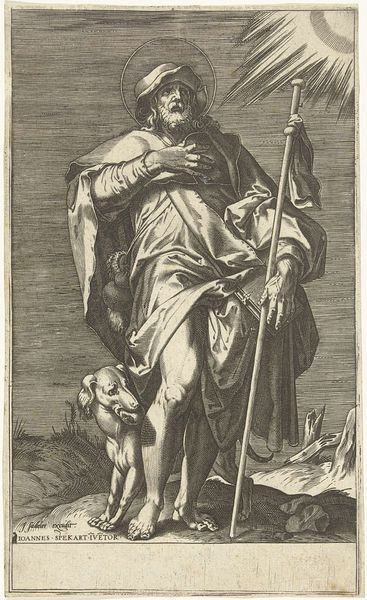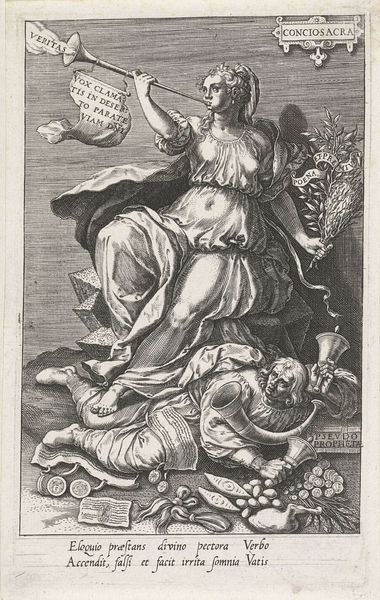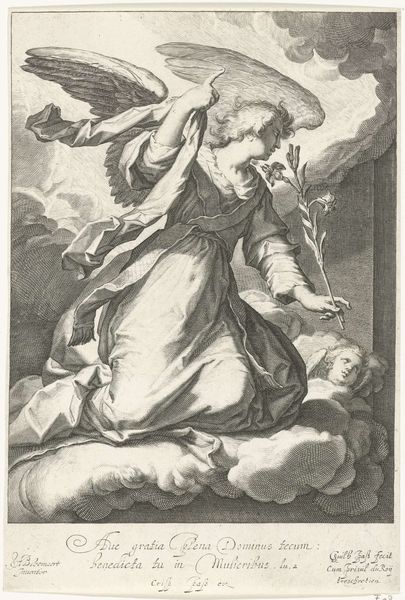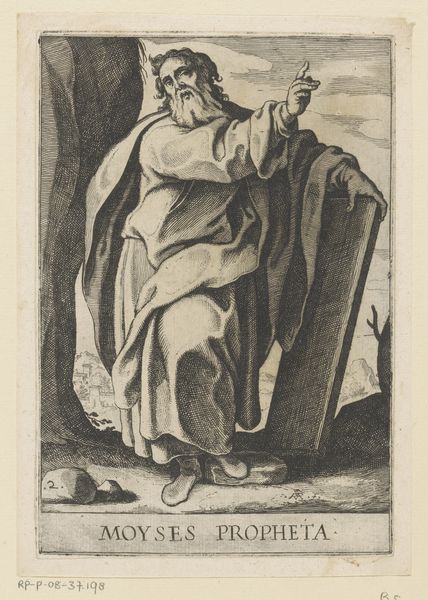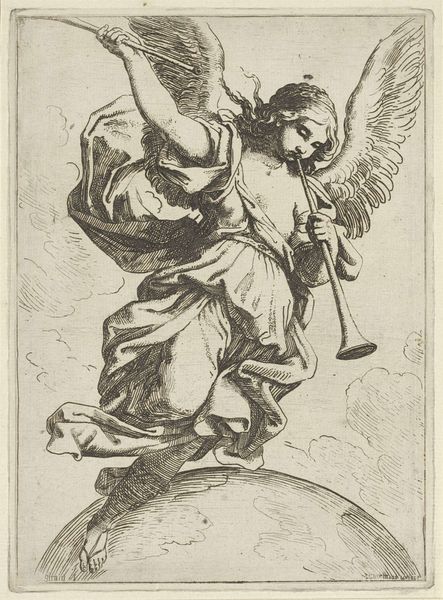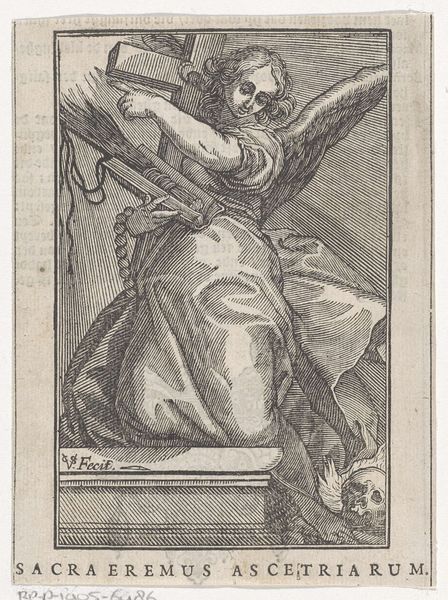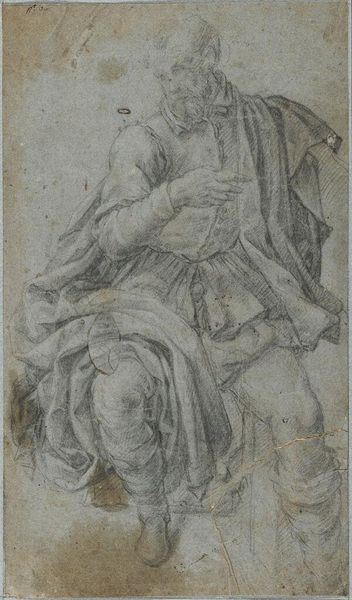
drawing, print, engraving
#
portrait
#
drawing
#
baroque
# print
#
figuration
#
portrait drawing
#
history-painting
#
engraving
Copyright: Public Domain: Artvee
Editor: Here we have Peter Paul Rubens' engraving of Saint Catherine of Alexandria. There’s so much detail, and it appears she’s stepping on a broken wheel while holding a sword. What do you see in this piece? Curator: Looking at this through a materialist lens, the engraving technique itself is key. Consider the labour involved, the craft. Each line, etched into the plate, speaks to a specific process of production. Notice, too, how this method, though reproductive, makes Rubens' design accessible to a broader audience. Was this readily available to people of all social strata? What kind of consumption were they targeting? Editor: So, you’re saying the *how* it was made and who could get it is as important as *what* it depicts? Curator: Absolutely. The choice of engraving as a medium, versus painting, radically alters the reception and the socio-economic impact of the image. The Baroque was not confined to the halls of the wealthy. This wasn't some private indulgence, this image could be produced, disseminated. Editor: I never thought of that before! That changes everything. It's not just a saint; it’s about expanding his practice. Curator: Precisely. The commercial aspect shouldn't be ignored; it played an essential role in spreading Rubens' influence. I wonder who produced the final version we have in front of us. Editor: So, considering art through the lens of material and its impact is not separate from art history but essential to understanding it. That is interesting. Curator: Exactly, questioning how things are made opens the floodgates!
Comments
No comments
Be the first to comment and join the conversation on the ultimate creative platform.
